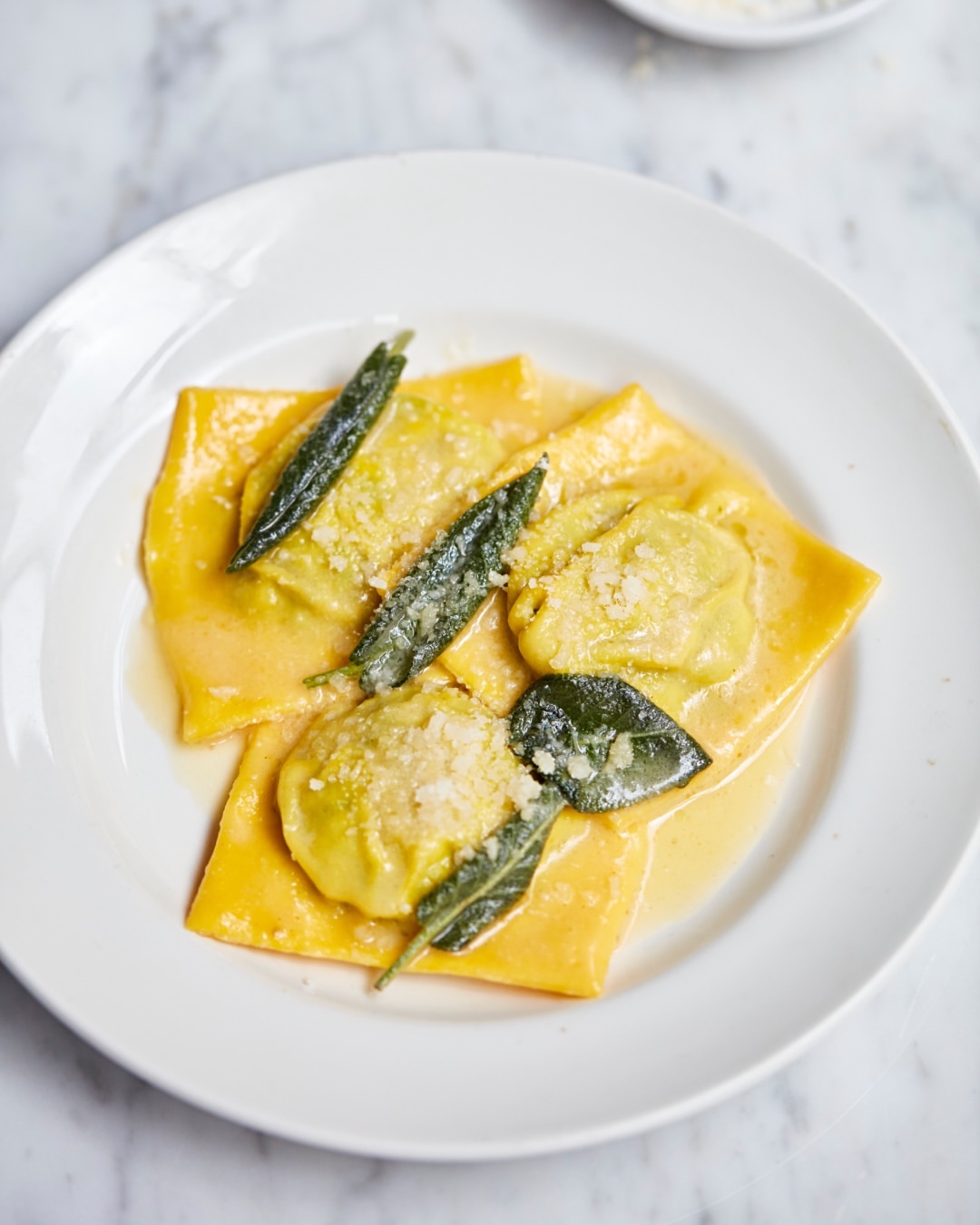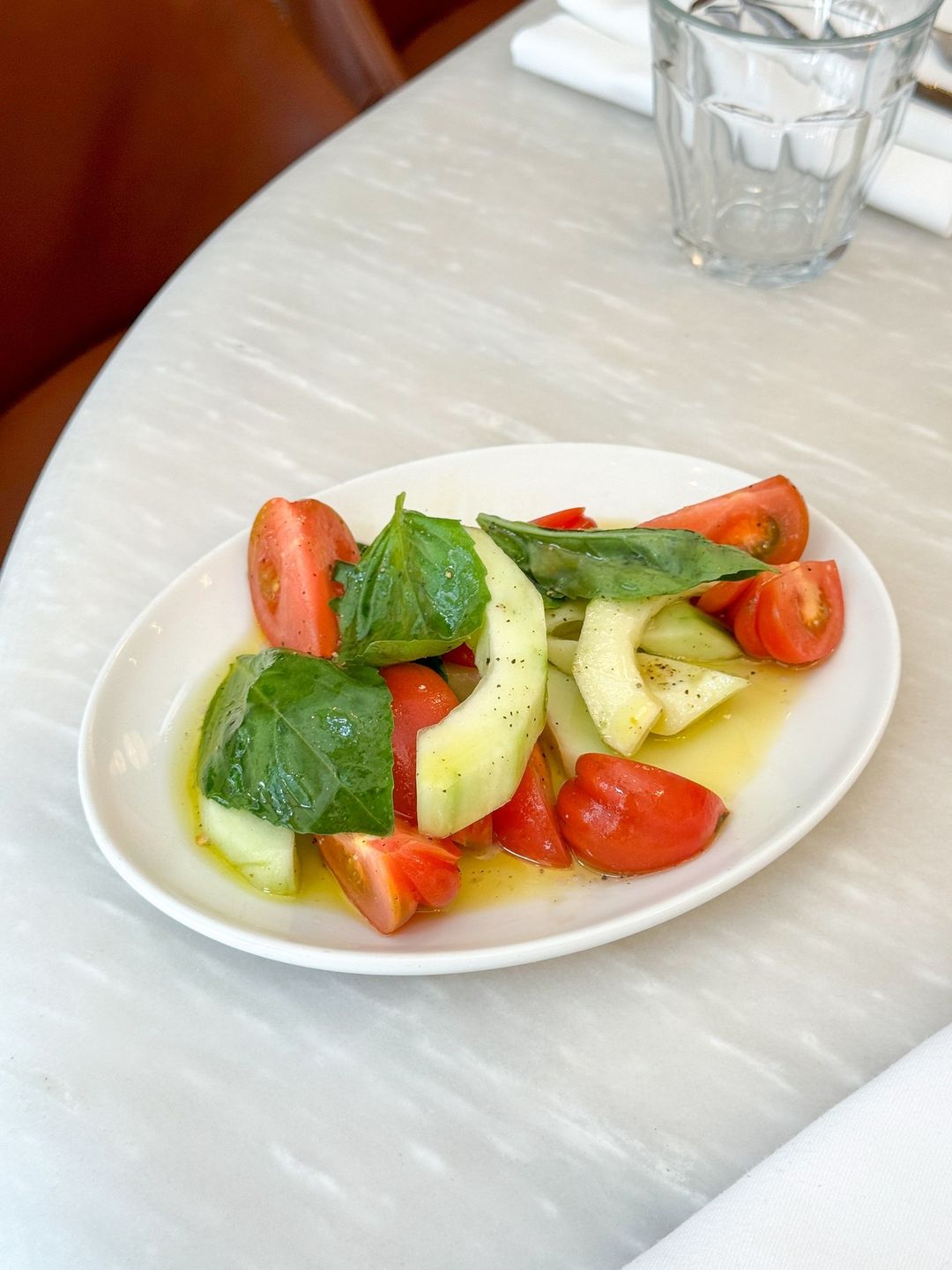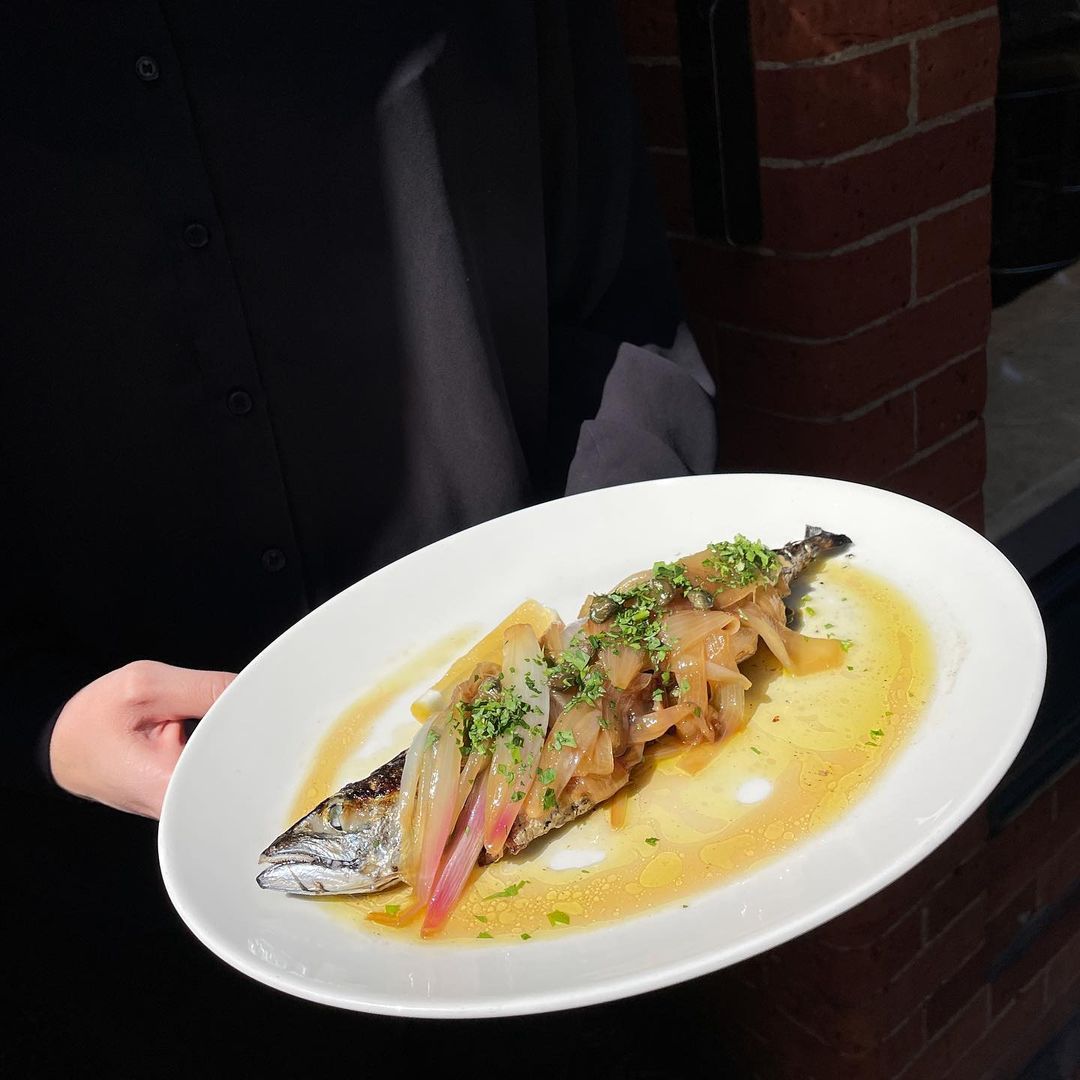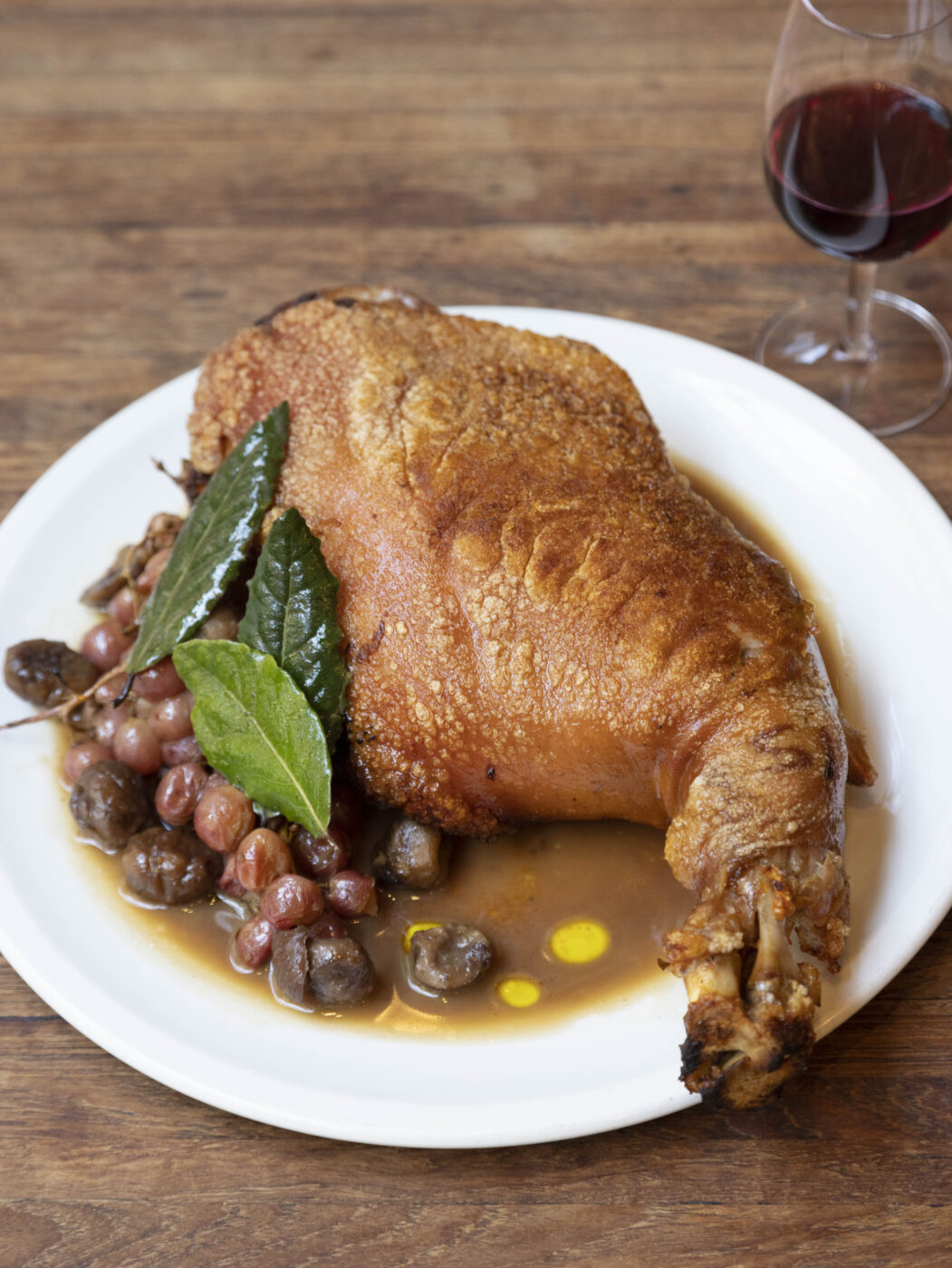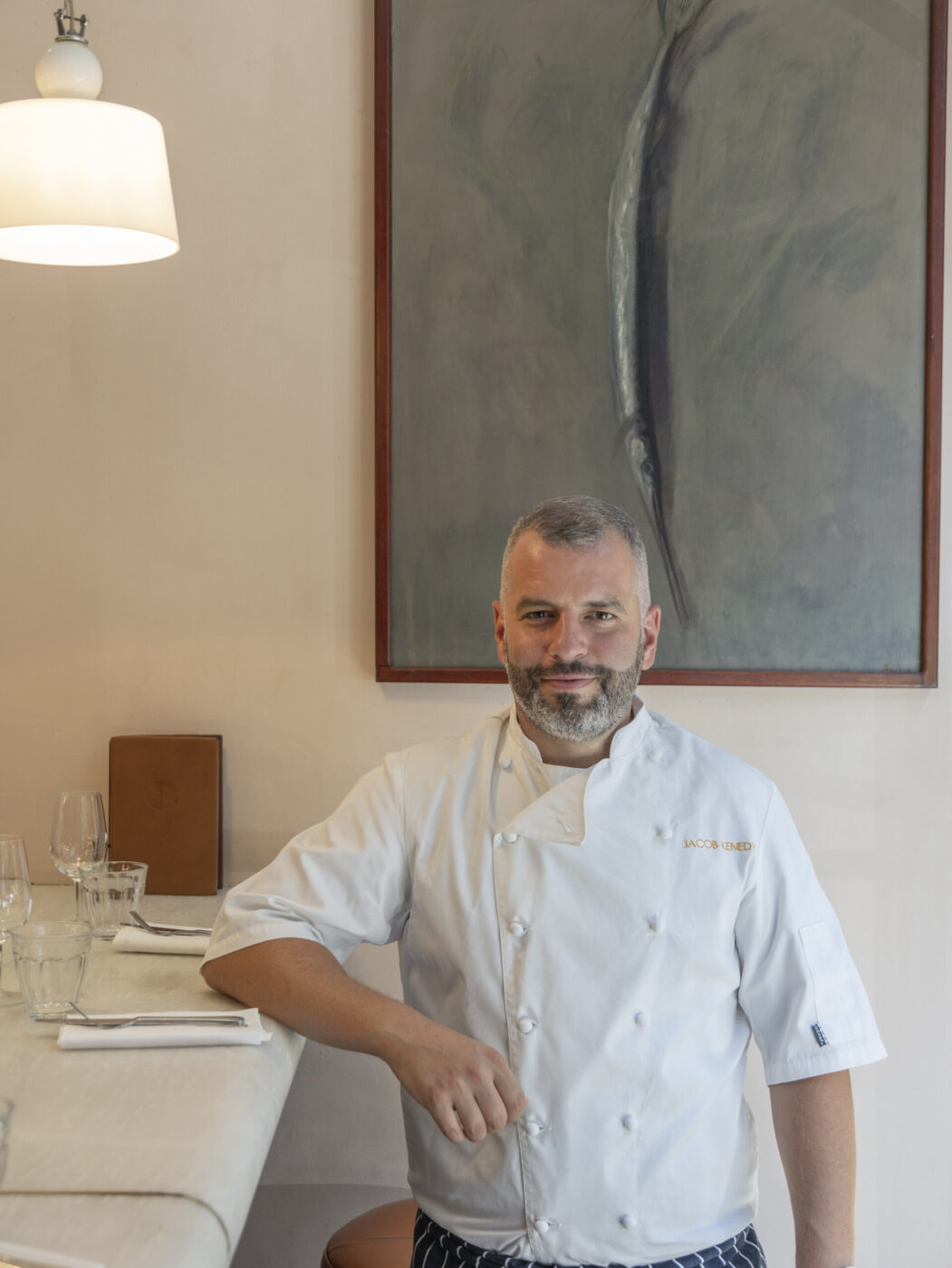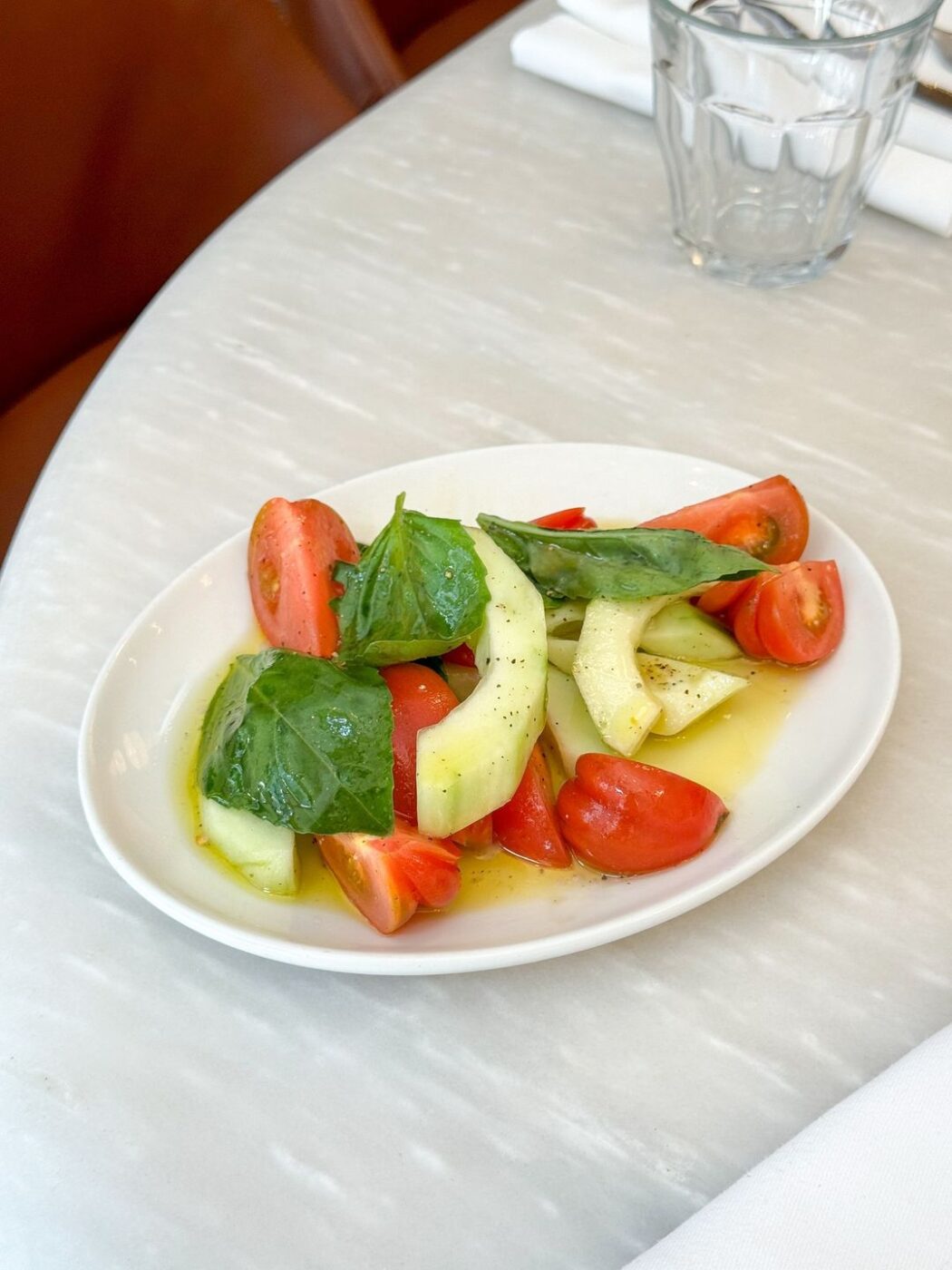For starters! Picture this: mounds of freshly fried squid, battered to a light, crunchy perfection, accompanied by citrus fruits (rinds included) that don’t skimp on the batter and add zesty satisfaction with every bite. Supplì balls of refried risotto, oozing with mozzarella and rich passata. Watermelon, Tropea onion, and oregano create a salad that takes fresh and fabulous to another level; a delicacy perhaps only rivaled by crudité di mare: paper-thin slices of sea bream, red prawns, langoustines, and plump scallops kissed with a drizzle of rosemary oil.
Now, close your eyes and savor the last sip of a summer-scented, fresh peach Bellini.
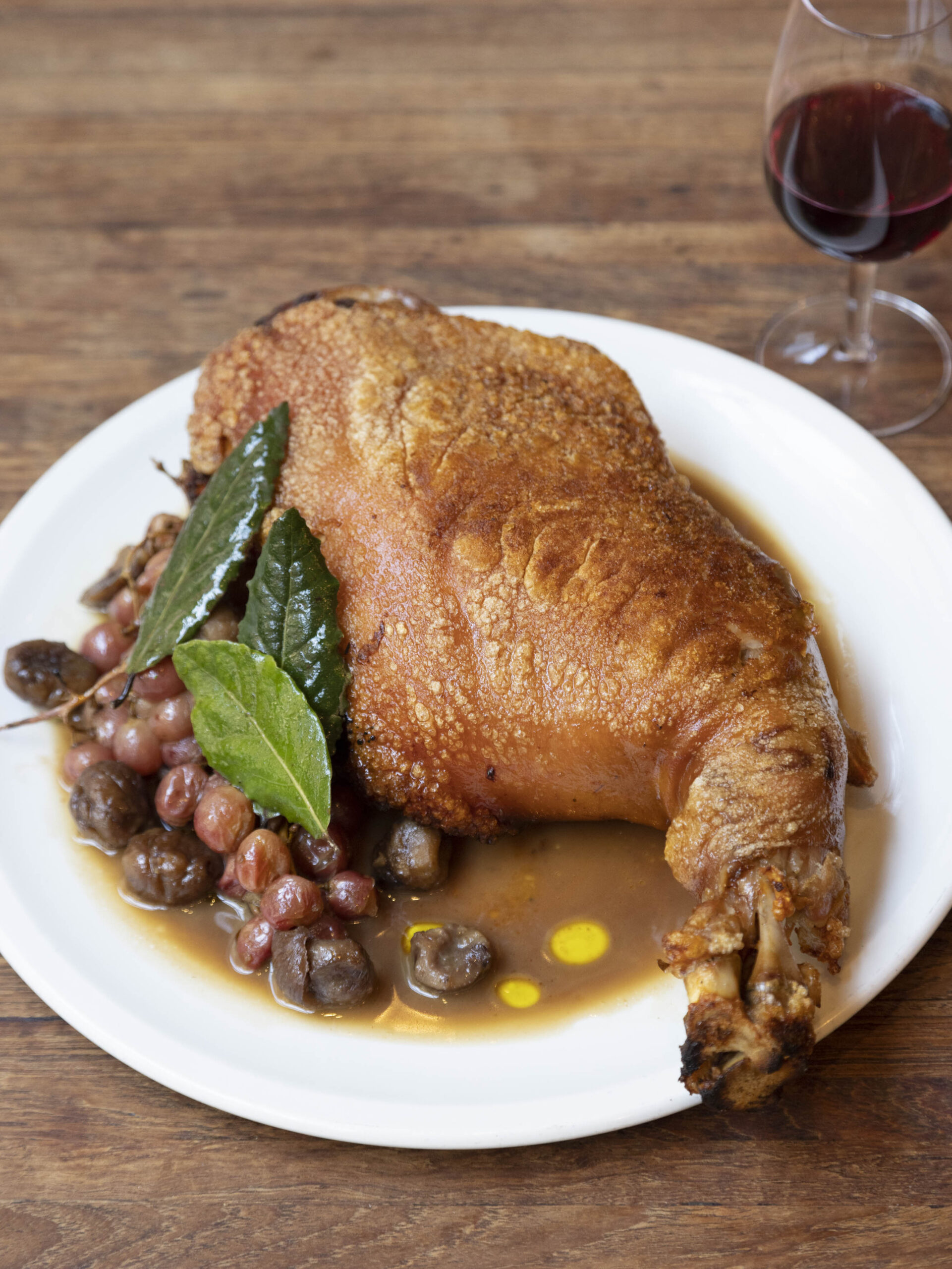
Suckling pig
If your mind has whisked you away to the Roman seaside, the rolling Tuscan hills, a lido on the Adriatic Sea in Puglia, or the Venetian lagoon–think again. We’re here in London, in the heart of Soho. Amidst the melting pot of everyone and everything, buzzing nightlife, copious bars, and opposite the neon-glowing lights of a lively yet weathered masseuse bar, you’ll find Jacob Kenedy’s culinary whizz of a restaurant, Bocca di Lupo.
In come the pastas. Oodles of tagliolini, submerged in squid and its ink ragù. Shavings of bottarga for extra oomph. Mouth-watering parcels stuffed with veal and cabbage, sizzled in butter and sage–that’s agnolotti del plin. Onto the oven and grill for salt-crusted bream, spring chicken in broad-bean panzanella, or succulent roast pig with wild garlic infusion.
Washed down, of course, with gallons of the finest Brunello.
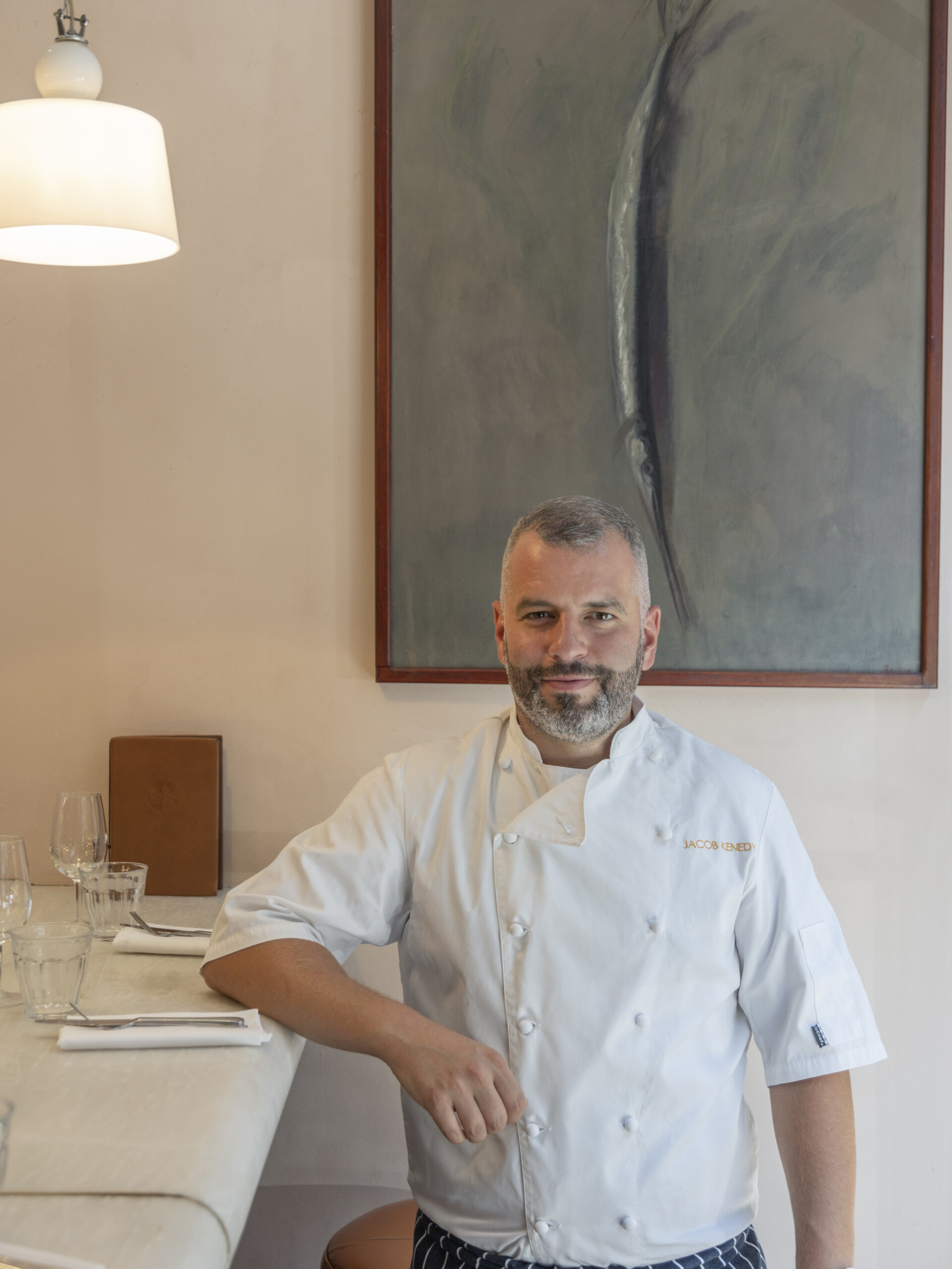
Jacob Kenedy at Bocca di Lupo
I had the pleasure of meeting Jacob Kenedy at Bocca di Lupo on a sunny morning in May. Jacob oozes the confidence of a chef; a natural leader, a creative soul, and a person of true entrepreneurial brilliance. As we began our interview, his calm demeanor and soothing voice instantly put me at ease–the same ease, I realized, that draws his loyal customers back.
His career has taken many leaps–from quasi biologist, interning on sea squirt developmental research at Haifa University (my question: has he now learned to cook them?), to DJ in San Francisco to glassblower. I myself grew up drinking from his magical, multicolored Murano goblets. Yet, food triumphed in the end, and in 2008 he opened a shop in Soho with his then partner Victor Hugo.
Next, for a slice of saffron-glazed cassata, a scoop of blood orange sorbet so refreshing it’s swimmable, gelato of ricotta sour cherry, mint stracciatella, or mascarpone with raspberry and rose.
Flavors that, if one didn’t know better, were dreamt up in heaven. It wasn’t my first time at the restaurant by any means. Like many of London’s food-centric folk, I seize any chance to dine at Bocca di Lupo, filling my stomach to its heart’s content with Italian delicacies that, let’s be honest, save me the cost of a plane ticket.
And indeed, the idea of eating the real deal abroad was the first point we stumbled upon in the interview. Born in California, Jacob’s grandmother was advised by her doctor to holiday in Italy to build up her immune system. This was back in the ’50s. Within mere weeks, she and Jacob’s grandfather, the pioneering art dealer John Becker, had bought a house in Rome and a beachside house in Sperlonga. What began as a health-advised holiday became home, just like that.
Although Jacob grew up in London with his parents, much of his childhood was spent visiting his grandparents in Italy. His favorite foods quickly became Italian. Which kid can say no to a plate of spaghetti alle vongole or gelato, after all? Jacob tells me he has a clear first food memory from age two–sitting on his grandfather’s lap, who fed him artichokes while wearing an eye patch. Sadly, his grandfather was no pirate (although in the eyes of an idolizing two-year-old boy, maybe) but was suffering from eye cancer at the time and passed away shortly after.
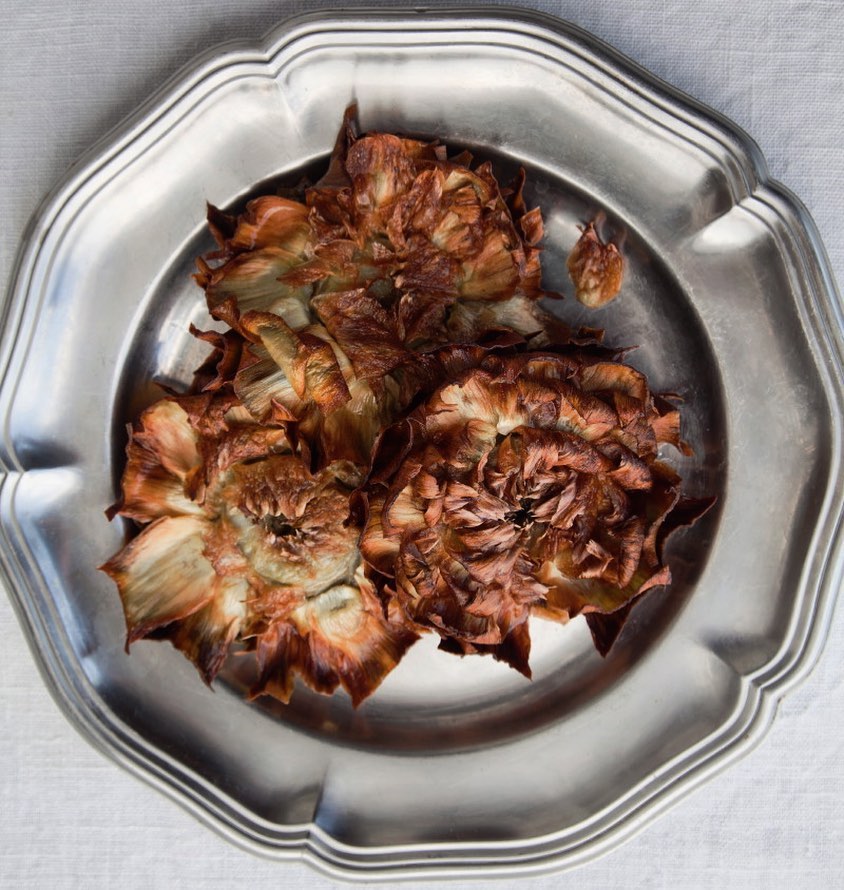
Carciofi alla giudia
In his twenties, Jacob and partner Victor embarked on a year-long giro d’Italia, traveling across the boot-shaped peninsula, experiencing the diverse cultures within and devouring as many dishes and local produce as they could possibly fit in.
“It was in this backdrop that I realized there was nowhere in the UK where I could find food similar to what I enjoyed in Italy,” says Jacob. “The mission was clear: to serve that food.”
He continues, “That year I learned something which I hadn’t really twigged onto before: that there is no singular Italian cuisine. There is a much stronger regional sense of identity than national identity, and it’s very young… That fascinated me, and it is this that led to the birth of Bocca di Lupo.”
Italian restaurants in the UK tend to fall into one of three categories: those run by British chefs who do what they like, those run by Italians that stay true to the specific region they originate from, or those offering a more generic, adapted version of Italian cuisine that has become standard. “Food is being made blander, richer, creamier, sweeter…” Jacob tells me. “But let’s not underestimate the British palate. Let’s make it more enjoyable, more challenging.”
Jacob introduced the fourth option to hungry Londoners, and one that makes his restaurant truly special: a harmonious blend of Italy’s regional cuisines. Bocca di Lupo is a voyage for both the mind and palate through the diverse culinary heritage of the Italian peninsula. Listing the region alongside each item on the menu, customers can dine through all 20 regions. Jacob is not interested in fine dining (at least not in the sense we’ve come to understand the term). He rather focuses on balancing sophisticated and rustic, creating food that you want to eat every day. (Bocca every day? That’s more than fine by me.)
For various reasons, some regions take a more prominent place on the menu. For one, those with a stronger wine story; you’ve got to have the right wine-food pairing. Then there are those regions that, for their broader appeal, and like many, Jacob frequents more regularly: Lazio, Tuscany, Piedmont, Veneto, Campania, and Sicily. He notes, for example, that only one, “maybe two,” dishes from Molise have been served over the restaurant’s 16-year history. When asked about their specifics, he couldn’t remember; a nod, I’d say, to the mysterious place, often dubbed the forgotten region. Researching later, I learned that torcinelli, a dish of discarded lamb scraps, is a Molisan specialty–certainly not for the faint-hearted.
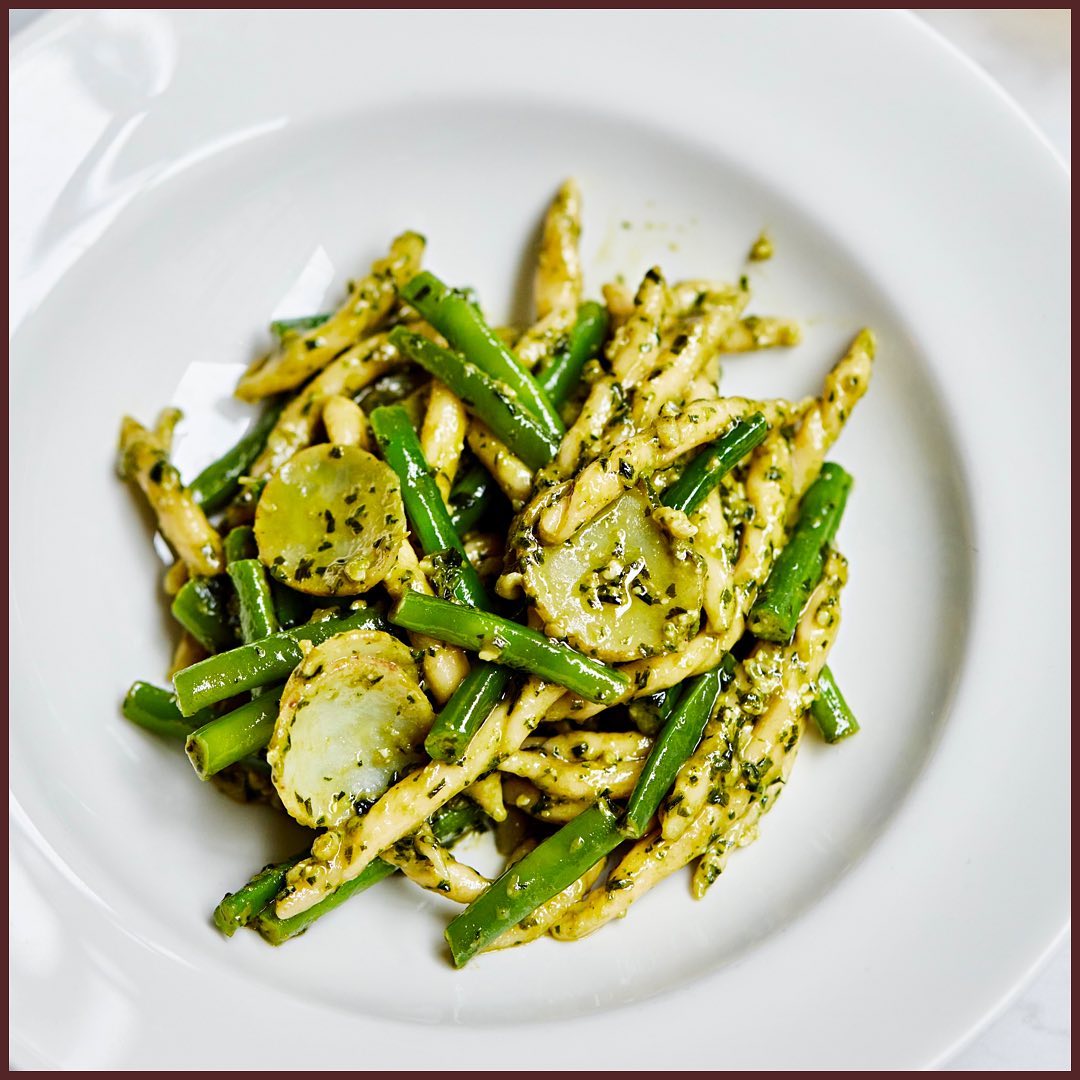
Trofie al pesto
Seasons, above all, will determine which regions take center stage at Bocca; keeping a cohesion within the menu that even regional foodies at loggerheads with one another would not be able to dispute. In summer, the focus shifts southward. More cold dishes are served. Less butter, more olive oil. Aubergines, peppers, an abundance of tomatoes, and other sun-ripened delights. By winter’s peak, clients are pulled up to the northern regions. Truffles are in. Hail the hearty soups and rich ragùs. Even so, unexpectedly delightful balance is found in pairing from plates from other ends of the country–a point driven home when a refreshing Sicilian blood orange salad perfectly cuts through the unctuousness of a meaty Bolognese ragù.
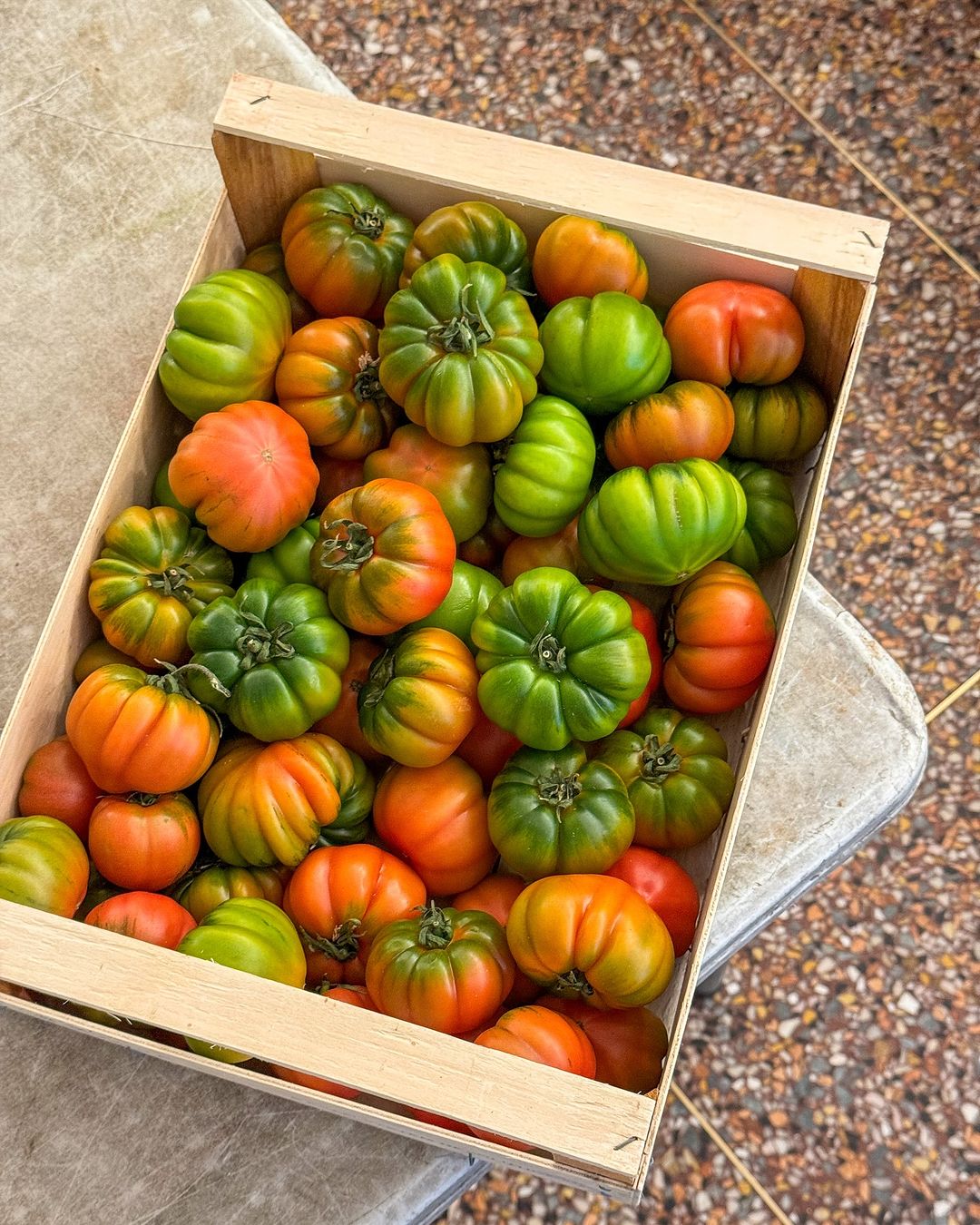
Marinda tomatoes from Sicily
Italians and Jacob alike prioritize locally sourced ingredients. “It’s the ingredients that drive us,” Jacob emphasizes. When British artichokes are in season, the menu ventures to Lazio and Sardinia. Tomatoes lead to Sicily and Campania, while mushrooms bring Emilia-Romagna to life. With 30-40% of the menu changing monthly, eating here is always a new experience–both for clients and hard-working cooks.
I ask Jacob how he comes up with his recipes and whether there’s a particular approach he follows. “I find a dish and try to understand what it’s about. I’ll get as good an understanding as I can,” he explains. “I’ll eat the dish within the region at a bunch of good places, trying to figure out what I like most about it, which versions stand out to me. Then, in my attempt to recreate it, looking at a few recipes but not strictly following any of them, I’ll start to take away things that don’t need to be there. The simplest version tends to be the tastiest. I hope the recipe that I end up with will be interesting and acceptable to someone from the region. Or,” he adds with a chuckle, “they might argue against it until they are blue in the face.”
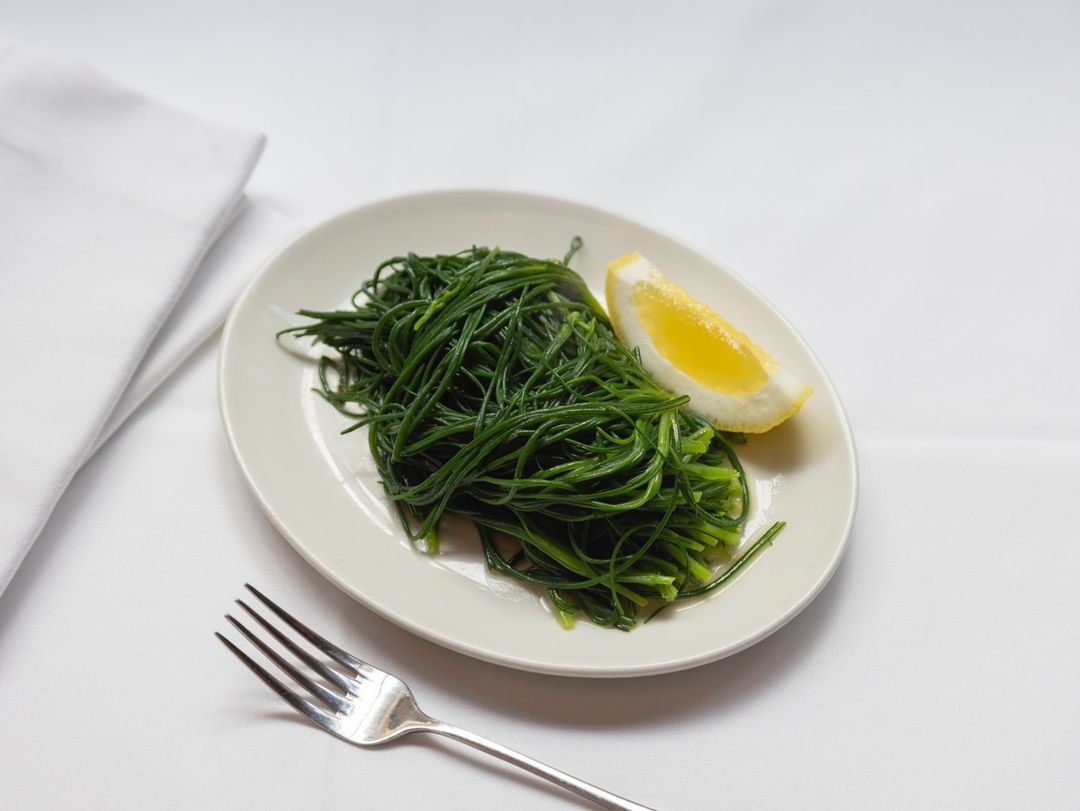
"The simplest version tends to be the tastiest"; Agretti with olive oil and lemon
Debates are indeed a favorite pastime among Italians–enjoyed but with limits. Never offend the cooking of an Italian’s nonna. That’s where you cross the line.
At this concluding moment of the interview, we have been served a breakfast fit for gods: thick, Neapolitan-style pizza, served straight from the oven, slathered with garlic and fresh mozzarella. Perhaps Italians would raise an eyebrow at garlic for colazione–but all the better, that’s more for me.
With a satisfied stomach and profound admiration for this phenomenal chef, my thoughts turned to Jacob’s grandfather, the pirate-esque lover of artichokes. If he could see his grandson now, he would be immensely proud.
I now encourage all lovers of Italy and its gastronomy to venture to London’s Bocca di Lupo. Its name, an idiom meaning “good luck” in Italian, says it all. The place makes anyone leaving its doors feel extremely fortunate.
